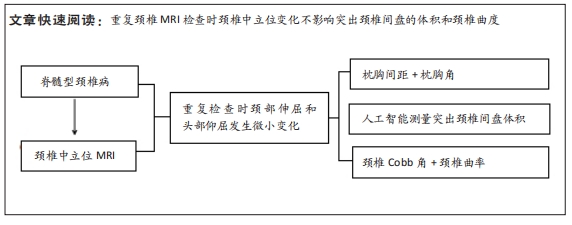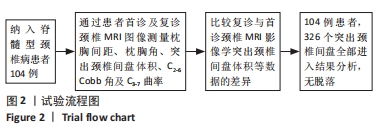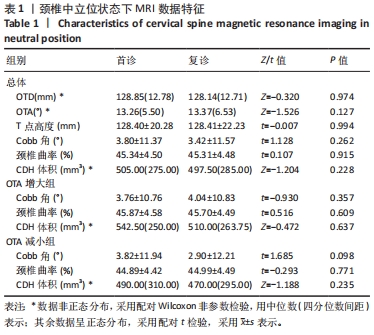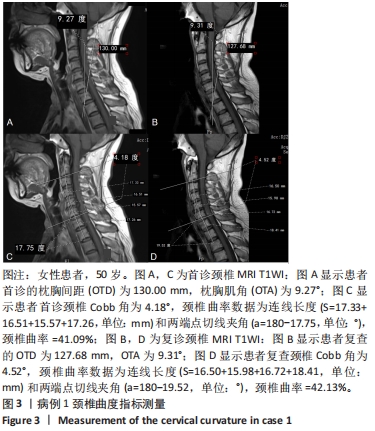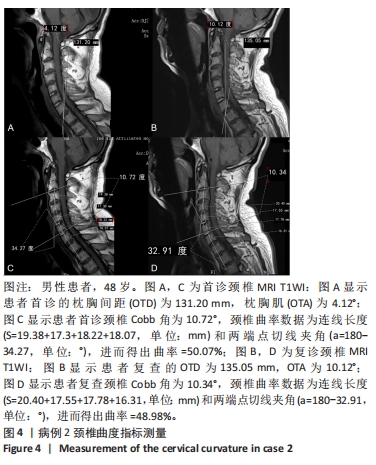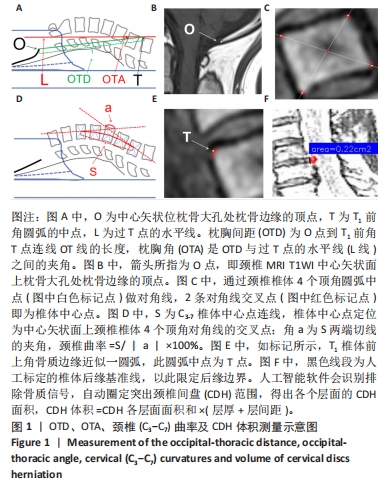[1] KANE SF, ABADIE KV, WILLSON A. Degenerative Cervical Myelopathy: Recognition and Management. Am Fam Phys. 2020;102(12):740-750.
[2] HITCHON PW, WOODROFFE RW, NOELLER JA, et al. Anterior and Posterior Approaches for Cervical Myelopathy: Clinical and Radiographic Outcomes. Spine (Phila Pa 1976). 2019;44(9):615-623.
[3] ZHANG C, LI D, WANG C, et al. Cervical Endoscopic Laminoplasty for Cervical Myelopathy. Spine (Phila Pa 1976). 2016;41 Suppl 19:B44-B51.
[4] FU S, ZHANG C, YAN X, et al.Volumetric Changes in Cervical Disc Herniation: Comparison of Cervical Expansive Open-door Laminoplasty and Cervical Microendoscopic Laminoplasty. Spine (Phila Pa 1976). 2022;47(7):E296-E303.
[5] ZHANG C, FU S, YAN X, et al. Cervical microendoscopic laminoplasty-induced clinical resolution of disc herniation in patients with single- to three-level myelopathy. Sci Rep. 2022;12(1):18854.
[6] 林顺,孙一夫,俞鹏飞,等.腰椎间盘突出后重吸收研究进展[J].中国中医骨伤科杂志,2022,30(4):85-88.
[7] 姜冬蕾,马跃文.腰椎间盘突出自发重吸收的研究进展[J].中国矫形外科杂志,2021,29(11):1000-1003.
[8] ORIEF T, ORZ Y, ATTIA W, et al. Spontaneous resorption of sequestrated intervertebral disc herniation. World Neurosurg. 2012;77(1):146-152.
[9] 王欢,王海义,安春厚.经显微内窥镜手术治疗腰椎间盘突出症[J].中华骨科杂志,2002,22(1):17-19.
[10] 凌晓明,张春霖,严旭,等, 内窥镜下微创颈椎管成形治疗脊髓线Ⅲ型颈椎病可明显改善颈椎曲度[J]. 中国组织工程研究,2023,27(22):3555-3560.
[11] LEE SY, HUR JW, RYU KS, et al. The Clinical Usefulness of Preoperative Imaging Studies to Select Pathologic Level in Cervical Spondylotic Myelopathy: Comparative Analysis of Three-Position MRI and Post-Myelographic CT. Turk Neurosurg. 2019;29(1):127-133.
[12] LEE RKL, GRIFFITH JF. Weight-bearing Magnetic Resonance Imaging of the Cervical Spine. Semin Musculoskelet Radiol. 2019;23(6):581-583.
[13] LÉONIEH, HUSLER M, SCHWEINHARDT P, et al. Influence of Axial Load and a 45-Degree Flexion Head Position on Cervical Spinal Stiffness in Healthy Young Adults. Front Physiol. 2021;12:786625.
[14] NEWELL RS, BLOUIN JS, JOHN S, et al. The neutral posture of the cervical spine is not unique in human subjects. J Biomech. 2018;80:S0021929018306778.
[15] KIM YH, KIM SI, PARK S,et al. Effects of Cervical Extension on Deformation of Intervertebral Disk and Migration of Nucleus Pulposus. PM R. 2017;9(4):329-338.
[16] PROST S, FARAH K, TOQUART A, et al. Contribution of dynamic cervical MRI to surgical planning for degenerative cervical myelopathy: Revision rate and clinical outcomes at 5 years’ postoperative. Orthop Traumatol Surg Res. 2023; 109(2):103440.
[17] BAJOURI Z, TELANG S, FRESQUEZ Z, et al. Evaluating Changes to the Modified K-Line Using Kinematic MRIs. Spine (Phila Pa 1976). 2023;48(12):859-866.
[18] PAHOLPAK P, TAMAI K, SHOELL K, et al. Can multi-positional magnetic resonance imaging be used to evaluate angular parameters in cervical spine? A comparison of multi-positional MRI to dynamic plain radiograph. Eur Spine J. 2018;27(5):1021-1027.
[19] IACONO S, DI STEFANO V, GAGLIARDO A, et al. Hirayama disease: Nosological classification and neuroimaging clues for diagnosis. J Neuroimaging. 2022;32(4): 596-603.
[20] FU S, ZHANG C, YAN X, et al. A New Automated AI-Assisted System to Assess Cervical Disc Herniation. Spine (Phila Pa 1976). 2022;47(16):E536-E544.
[21] ZHANG J, BUSER Z, ABEDI A, et al. Can C2-6 Cobb Angle Replace C2-7 Cobb Angle? An Analysis of Cervical Kinetic Magnetic Resonance Images and X-rays. Spine (Phila Pa 1976). 2019;44(4):240-245.
[22] PATWARDHAN AG, HAVEY RM, KHAYATZADEH S, et al. Postural Consequences of Cervical Sagittal Imbalance: A Novel Laboratory Model. Spine (Phila Pa 1976). 2015;40(11):783-792.
[23] 李清萍,郭安娜,陈少卿,等.基于铅垂线观察脊柱矢状面平衡的可行性[J].脊柱外科杂志,2020,18(3):184-187.
[24] 吴炳轩,刘宝戈,刘振宇,等.颈椎曲度和活动度参数的影响因素[J].中华骨科杂志,2014,34(4):380-386.
[25] 魏冬,夏群,苗军,等. 生理载荷下健康成人寰枢椎三维瞬时运动的特点[J].中国组织工程研究,2016,20(17):24486-24492.
[26] WU LP, HUANG YQ, ZHOU WH, et al. Influence of cervical spine position, turning time, and cervical segment on cadaver intradiscal pressure during cervical spinal manipulative therapy. J Manipulative Physiol Ther. 2012;35(6):428-436.
[27] LIU Q, GUO Q, YANG J, et al. Subaxial Cervical Intradiscal Pressure and Segmental Kinematics Following Atlantoaxial Fixation in Different Angles. World Neurosurg. 2016;87:521-528.
[28] BELL KM, YAN Y, HARTMAN RA, et al. Influence of follower load application on moment-rotation parameters and intradiscal pressure in the cervical spine. J Biomech. 2018;76:167-172.
[29] ARSHAD R, SCHMIDT H, EL-RICH M, et al. Sensitivity of the Cervical Disc Loads, Translations, Intradiscal Pressure, and Muscle Activity Due to Segmental Mass, Disc Stiffness, and Muscle Strength in an Upright Neutral Posture. Front Bioeng Biotechnol. 2022;10:751291.
|
